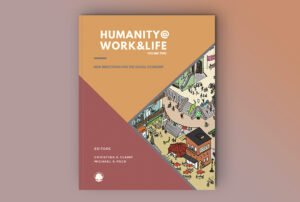
March 10, 2020; Slate
Much of the nation was aghast when the news broke that the Trump administration had ordered the bilingual posters from the Center for Disease Control (CDC) about how to identify COVID-19 symptoms and stop its spread be taken down from immigration courts and the waiting rooms outside. According to the administration, the immigration judges had no authority to place advisories in their courts without specific permission.
Within a few hours of the National Association of Immigration Judges (NAIJ) revealing this directive, the government walked back its order and announced that the signs should stay up. The damage was done, however and the buzz in the media and elsewhere focused on the administration’s attitude toward immigrants and refugees. The Democrats jumped on this bandwagon, as did immigration activists, pointing out that these policies could increase the risk for transmission of infectious diseases among these refugee populations.
But the story here isn’t about the posters or the sharing of information, no matter how important. The real issue is about the control and management of these immigration courts and the judges who serve on them. This incident just highlights the tug-of-war that exists as the Trump administration continues its efforts to keep these judges and their union muzzled and under the thumb of the Department of Justice that employs them.
Writing for Slate, Mark Joseph Stern points out the hostile parameters within which these judges and their courts must function, using this “poster incident” as an example. Early last week, the judges’ union sent a letter with guidance on how the judges might deal with the virus. One of the recommendations was the posting of the CDC posters in both Spanish and English. Within a few hours, the judges received an email from Christopher A. Santoro, acting chief immigration judge, that basically told them to cease and desist. It stated that immigration judges did not have the authority to post things and that DOJ leadership had not authorized the posting of the CDC posters.
Sign up for our free newsletters
Subscribe to NPQ's newsletters to have our top stories delivered directly to your inbox.
By signing up, you agree to our privacy policy and terms of use, and to receive messages from NPQ and our partners.
As Stern points out, the key word in this email is “authority.” These judges have no authority, no control, and they are totally subservient to the will of the Department of Justice and the White House. If they were a part of the federal court system, they would be under a separate branch of government, but as part of the executive branch they cannot and do not function independently. This is why they, unlike any other judicial group, have formed a union. This is also why this administration has constantly sought to undercut that union.
Immigration judges operate under severe restrictions. For example, free speech for these judges is not an option. They are barred from speaking about their work in public. They need approval from superiors before they can speak to the public about anything relating to immigration law, and that approval must go through multiple layers of people to get to a “yes”—if it ever does. This approval process extends to written work as well.
These judges’ rulings are also constantly being looked over and often overruled by political appointees. Attorney General William Barr and others in the DOJ have the authority, and have done just this when a judge’s ruling does not align with administration policy. Rather than being the arbiter of immigration law, they are being used as enforcers of Trump’s immigration policies. They have been required to meet deportation quotas and to move people as quickly as possible through the deportation and asylum process.
Clearly, being an immigration judge is not a plum job if you are looking for a way to do good for those seeking a better life. Attorney General Barr appoints these judges, so the newest ones align with his thinking. But many have been in place long before the current administration and have clear objections to its polices; still, they have little power to change them. Actions to bust the NAIJ, the judges’ union, show the hostility of the DOJ to those who do not fall into line.
This poster incident was just a blip on the radar showing the antagonism between the Trump administration and immigration judges. The public may have misinterpreted it as hostility toward immigrants. In part, this would be true, but when you look at the whole picture, it really is only a small piece of what was going on. It was not about health and safety for the Trump administration; it was about control. If you were an immigrant waiting for your hearing for asylum or deportation, how would that make you feel?—Carole Levine











